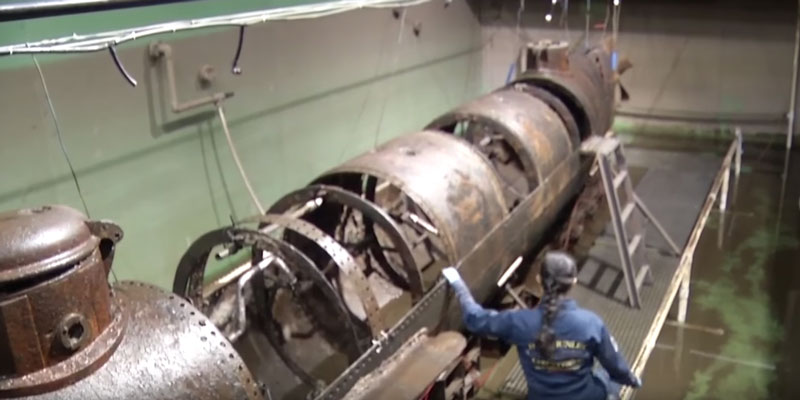Scientists studying the world’s first submarine to sink an enemy ship said Wednesday that the doomed Confederate crew did not release an emergency mechanism that could have helped the vessel surface quickly.
The 1,000 pounds (454 kilograms) of what are called keel blocks would typically keep the Mobile-built H.L. Hunley upright, but also could be released with three levers, allowing the sub to surface quickly in an emergency, said archaeologist Michael Scafuri, who has worked on the submarine for 18 years.
Scientists who removed the century of corrosion, silt and shells from the submarine found the levers all locked in their regular position, Scafuri said.
“It’s more evidence there wasn’t much of a panic on board,” Scafuri said.
The Hunley and its eight crewmembers disappeared in February 1864 in Charleston Harbor shortly after signaling it had placed explosives on the hull of the Union ship the USS Housatonic.
Ever since the Hunley was raised from the ocean floor in 2000, scientists have worked to determine why the sub never returned to the surface.
The crew moved the submarine through the ocean with a hand crank, and one theory is they were resting on the ocean floor 4 miles (6 kilometers) from shore waiting for the tide to turn to make their journey back to land easier and ran out of oxygen or got stuck.
The next step for scientists is to remove more of the corrosion, slit and other material collected on the hull. Over 18 years, Scafuri said they have uncovered nearly a dozen artifacts , reconstructed the faces of the crew members and gained more knowledge about the science behind the submarine, which was built in Mobile, Alabama.
The keel blocks go on display at the Hunley’s North Charleston museum Saturday.
(Associated Press, copyright 2018)
Sign-up now for our daily newsletter and never miss another article from Yellowhammer News.













